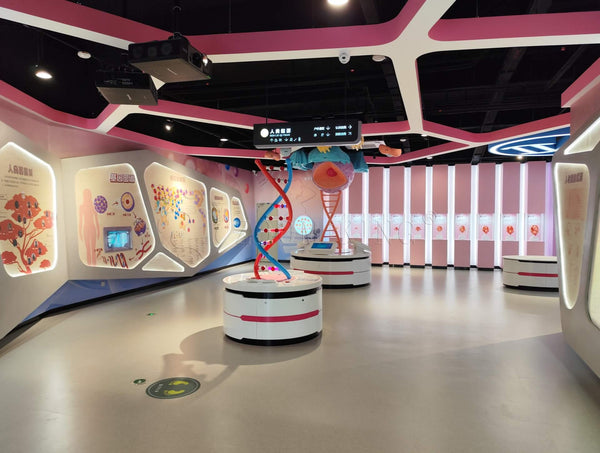Educational Exhibits: The Perfect Fusion of Science and Interactive Design for Engaging Young Learners

Introduction
Educational exhibits that combine science with interactive design are revolutionizing the way students learn. These exhibits not only captivate children with their visually stunning aesthetics but also provide hands-on experiences that align with modern educational philosophies. Whether in schools, museums, or educational centers, these exhibits have become essential tools for fostering curiosity, critical thinking, and a love of learning among young visitors.
Science Meets Interactive Design: A New Approach to Education
The marriage of science and interactive design offers a unique way to engage students. These educational exhibits are meticulously crafted to combine elegance with functionality, making learning both enjoyable and meaningful. Here’s how interactive design enhances science education:
-
Tactile Learning: Exhibits allow children to physically interact with scientific principles by manipulating objects, pressing buttons, or moving levers. This hands-on approach encourages exploration and deepens understanding.
-
Aesthetic Appeal: The sleek and elegant design of the exhibits is carefully considered to capture children’s attention while conveying complex concepts in an accessible manner.
-
Interactive Technology: Many exhibits incorporate modern technology such as touch screens, augmented reality, or sensor-based mechanisms, offering an immersive learning experience that aligns with the digital age.
These design elements make the exhibits an ideal educational resource, particularly for educators looking to inspire young learners.
Why Children and Educators Love Interactive Educational Exhibits
Interactive educational exhibits are highly effective at engaging students, making them a favorite for both children and educators alike. Here’s why:
-
Engagement and Fun: Children love interacting with these exhibits because they’re not just passive observers—they’re active participants. From creating energy through motion to simulating weather patterns, kids can directly experience science.
-
Supports Educational Goals: Educators appreciate how these exhibits align with educational standards, providing students with real-world applications of concepts they learn in the classroom.
-
Development of Critical Thinking: Through trial and error, children can make discoveries on their own, developing problem-solving and analytical skills in the process.
How Educational Exhibits Enhance Learning Outcomes
Educational exhibits have been proven to significantly enhance learning outcomes in various ways. Here’s why they are so effective:
-
Improved Knowledge Retention: When children engage with exhibits physically, they are more likely to remember what they’ve learned. Research suggests that hands-on experiences boost retention and comprehension.
-
Multi-Sensory Learning: These exhibits appeal to multiple senses, making learning more immersive. Whether it’s feeling vibrations, seeing dynamic visuals, or hearing sound effects, kids can engage in multi-sensory exploration.
-
Cognitive Development: Exhibits that encourage students to think critically and make decisions lead to better cognitive development. Problem-solving activities promote analytical thinking and creativity.
Popular Examples of Educational Exhibits
Some of the most effective educational exhibits combine interactive design with key scientific principles. Here are a few examples that are particularly well-loved:
-
Wind Power Generation Exhibit: Children can generate wind energy by turning turbines, learning how kinetic energy transforms into electricity. This exhibit is a perfect blend of physics and hands-on learning.
-
Interactive Water Conservation Model: Kids manipulate levers and buttons to control water flow, gaining a practical understanding of water conservation and the water cycle.
-
Electric Circuit Builder: This exhibit allows students to connect wires, bulbs, and switches to build simple electric circuits, offering a tangible demonstration of electricity and magnetism.
Conclusion
Educational exhibits that blend science with interactive design are redefining how students learn. Through hands-on interaction and thoughtful design, these exhibits create an engaging environment where children are encouraged to explore, experiment, and think critically. They offer a unique opportunity for educators to enhance their teaching methods, providing an effective and enjoyable way to convey scientific concepts to young minds.
